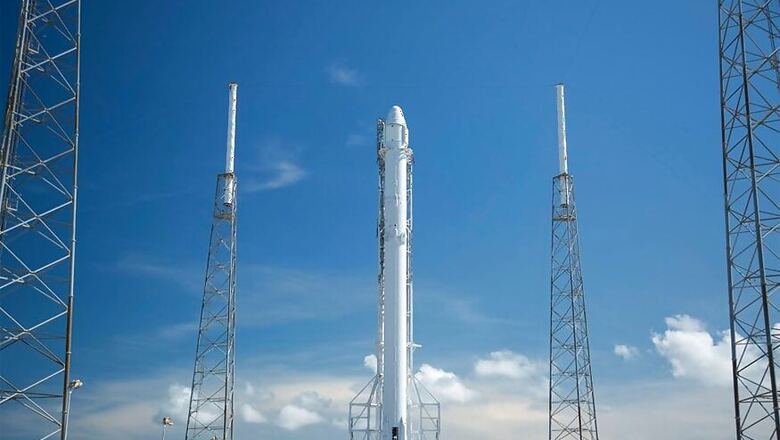
views
On its way to deploy five Iridium Next communications satellites on Tuesday, a SpaceX Falcon 9 rocket will also launch twin NASA satellites that will monitor Earth's water cycle, marking a unique rideshare arrangement. The satellites are scheduled to launch at 3.47 p.m. EDT from Vandenberg Air Force Base in Central California. (This corresponds to 1.17 a.m. Wednesday India time), NASA said. The two Gravity Recovery and Climate Experiment Follow-On mission (GRACE-FO) spacecraft will follow each other in orbit around Earth, separated by about 220 km. On liftoff, the Falcon 9 first-stage engines will burn for approximately two minutes and 45 seconds before shutting down at main engine cutoff (MECO).
Also Read: Canaan a Cryptocurrency Mining Rig Company Plans $2 Billion IPO
The Falcon 9's first and second stages will separate seconds later. Then, the second-stage engine will ignite for the first time (SES1) and burn until the vehicle reaches the altitude of the injection orbit, 490 km. While this burn is going on, the payload fairing -- the launch vehicle's nose cone -- will separate into two halves like a clamshell and fall away. When the rocket's second stage has completed its ascent to the injection orbit altitude, it will pitch down (its nose points down) 30 degrees and roll so that one of the twin GRACE-FO satellites is facing down, toward Earth, and the other is facing up, toward space.
Also Read: Honor 7A And Honor 7C With Qualcomm Processors To Launch in India Today
Then the second stage engine will cut off (SECO). About 10 minutes after liftoff, a separation system on the second stage will deploy the GRACE-FO satellites.
Separation will occur over the Pacific Ocean at about 17.5 degrees North latitude, 122.6 degrees West longitude. The first opportunity to receive data from the spacecraft will occur at NASA's tracking station at McMurdo, Antarctica, about 23 minutes after separation, NASA said.
After the GRACE-FO satellites are deployed, the Falcon 9 second stage will coast for half an orbit before reigniting its engine (SES2) to take the Iridium Next satellites to a higher orbit for deployment. GRACE-FO, a collaborative mission of NASA and the German Research Centre for Geosciences (GFZ), continues the work of the original GRACE mission in observing the movement of water and other mass around our planet by tracking the changing pull of gravity very precisely.
Also Watch: OnePlus 6 First Impressions Review: All You Might Need in 2018

















Comments
0 comment